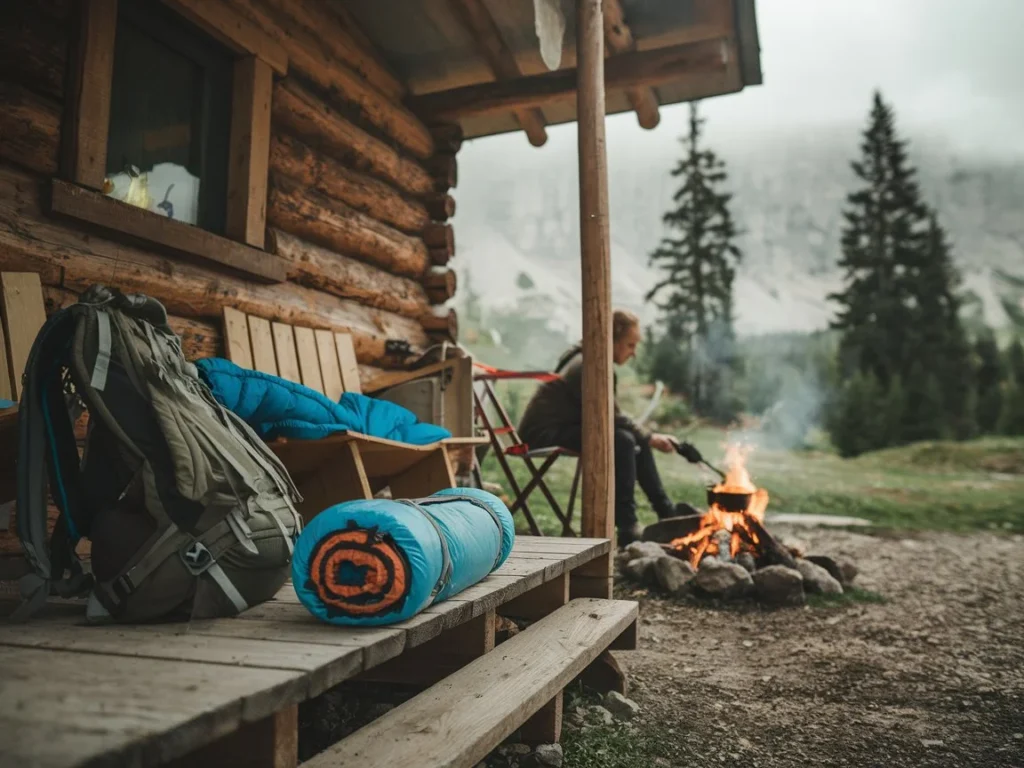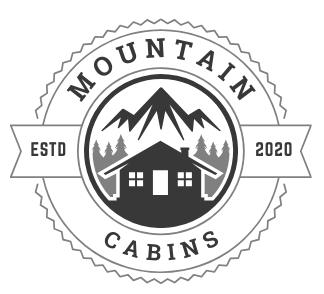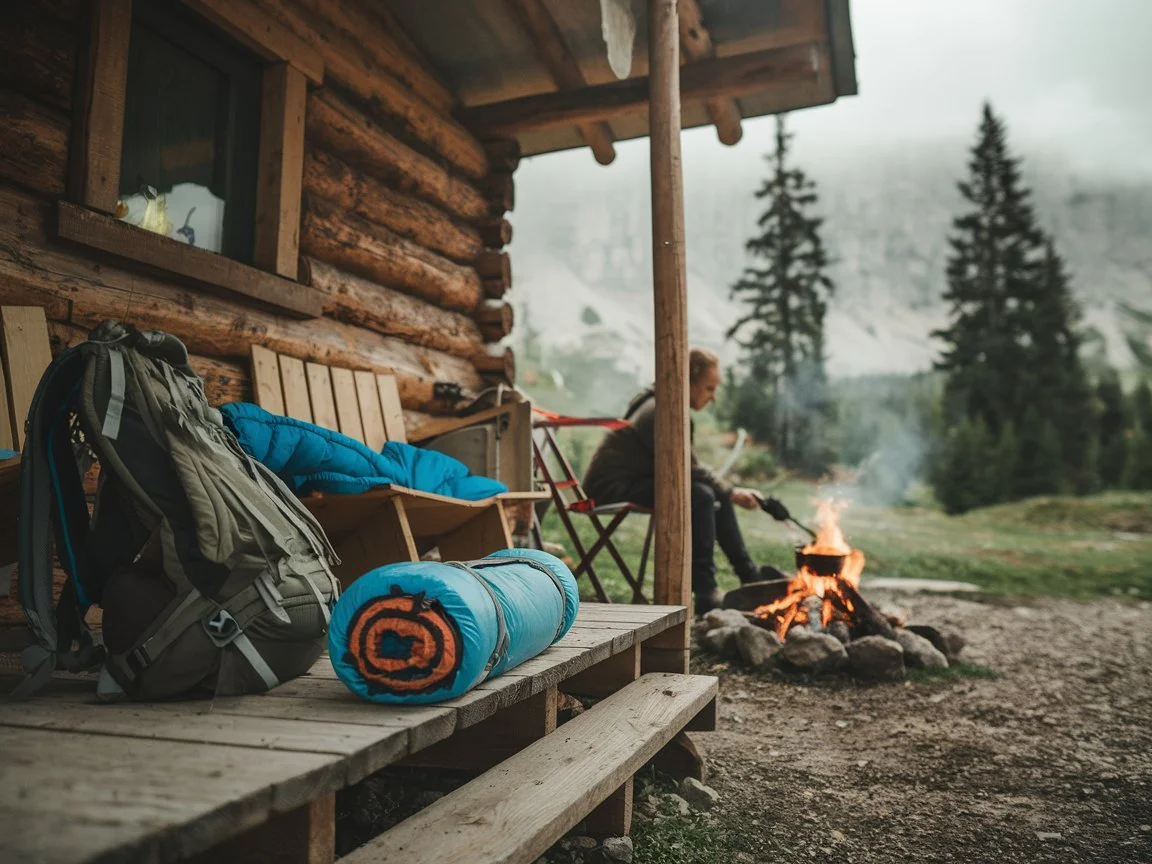
Cabin camping offers the perfect balance between comfort and adventure, allowing you to immerse yourself in nature without sacrificing basic conveniences. However, many travelers make the mistake of overpacking, bringing excessive gear that adds weight and complexity to their trip. A minimalist approach to cabin camping can enhance your experience by simplifying packing, reducing stress, and encouraging a deeper connection with the great outdoors.
By focusing only on the essentials, you can streamline your trip while still enjoying warmth, good food, and memorable activities. Minimalist camping doesn’t mean sacrificing comfort—it means carefully selecting multi-purpose, lightweight items that allow you to embrace the simplicity of nature.
This guide will walk you through everything you need to plan a successful minimalist cabin camping trip. From choosing the right cabin and packing smartly to preparing meals with minimal supplies and enjoying nature-based activities, you’ll learn how to travel light while making the most of your outdoor retreat.
1. Choosing the Right Cabin for Minimalist Camping
Selecting the right cabin is the foundation of a successful minimalist camping experience. The key is to find a balance between basic amenities and access to nature while ensuring you don’t bring unnecessary gear.
Cabins range from fully equipped modern retreats to rustic, off-grid shelters. If you’re aiming for a true minimalist adventure, consider a rustic or off-grid cabin. These typically have basic shelter, a wood stove, and an outdoor fire pit but may lack electricity or running water. This option reduces reliance on excess gear while still providing essential protection from the elements. On the other hand, if you’re new to minimalist camping, a modern cabin with limited amenities (such as a small kitchen and a simple heating source) can be a good starting point.
When choosing a cabin, prioritize features like:
- A fireplace or wood stove for warmth without requiring bulky sleeping bags
- A simple cooking area (fire pit or small stove) to prepare meals with minimal equipment
- Outdoor space for easy access to hiking trails and natural surroundings
Additionally, check what’s provided at the cabin before your trip. Some rentals include basic cookware, bedding, or lighting, meaning you can leave those items at home. By choosing a cabin wisely, you reduce the need for extra packing while still enjoying a comfortable and immersive experience in nature.
2. Essential Gear for a Minimalist Cabin Camping Trip
Packing efficiently is crucial for a minimalist cabin camping adventure. Focus on multi-functional, lightweight items that cover your basic needs without unnecessary bulk.
Sleeping Essentials:
- Sleeping Bag: Opt for a compact, three-season sleeping bag suitable for varying mountain temperatures.
- Sleeping Pad: A lightweight, inflatable sleeping pad provides insulation and added comfort.
Cooking Gear:
- Portable Stove: A small, backpacking stove is ideal for quick meals, especially if the cabin lacks a cooking area.
- Cookware: A single lightweight pot can serve multiple purposes, from boiling water to cooking meals.
- Utensils: Bring a spork and a multi-tool that includes a knife, reducing the number of items you carry.
Clothing:
- Layering System: Choose moisture-wicking base layers, insulating mid-layers, and a waterproof outer layer to adapt to changing weather conditions.
- Footwear: Lightweight, sturdy hiking shoes are versatile for various activities.
Lighting:
- Headlamp: A compact headlamp frees your hands for tasks around the cabin.
- Solar Lantern: A small, collapsible solar lantern provides ambient light without the need for batteries.
Miscellaneous:
- First Aid Kit: A basic kit with essentials like band-aids, antiseptic wipes, and pain relievers.
- Navigation Tools: A map and compass are reliable backups, even if you plan to use GPS devices.
equipment.
Simple Cooking Methods
- Campfire Cooking: If your cabin has an outdoor fire pit, a grill grate and a cast-iron skillet can handle most meals. Foil-wrapped vegetables, grilled meats, and one-pot meals like chili or stew work well.
- Portable Stove: A small backpacking stove is great for boiling water, heating canned soups, or making coffee.
- No-Cook Meals: Bring ready-to-eat options like sandwiches, granola, trail mix, and pre-packaged salads for quick meals.
Essential Cooking Gear
- A lightweight pot or pan for boiling and frying.
- A spork or multi-tool to minimize utensils.
- Reusable food containers for meal prep and leftovers.
- Collapsible silicone bowls to save space.
Easy Meal Ideas
- Breakfast: Instant oatmeal with dried fruit, scrambled eggs with pre-cooked bacon.
- Lunch: Peanut butter sandwiches, wraps with cheese and cured meats.
- Dinner: Pasta with canned sauce, grilled fish or meat with vegetables.
With the right gear and meal plan, you can enjoy delicious food without the hassle of carrying too much. Now, let’s move on to ensuring comfort without overpacking!
4. Staying Comfortable Without Overpacking
Packing light for a cabin camping trip doesn’t mean sacrificing comfort. By selecting versatile gear and clothing, you can stay warm, well-rested, and prepared for changing conditions without carrying unnecessary items.
Layering for Warmth
Mountain weather can be unpredictable, but layering helps you stay comfortable:
- Base Layer: Moisture-wicking materials like merino wool or synthetic fabric.
- Mid Layer: A lightweight fleece or insulated jacket for warmth.
- Outer Layer: A waterproof, wind-resistant shell to protect against the elements.
Minimalist Sleeping Setup
Instead of bulky blankets and pillows, opt for:
- A lightweight sleeping bag suited for the season.
- Inflatable or compact sleeping pads for insulation and comfort.
- A packable travel pillow or use a stuff sack filled with clothes.
Packing Smart
- Multipurpose items like a bandana (can be a towel, face covering, or sun shield).
- Compact hygiene essentials (biodegradable soap, toothbrush, and wipes).
- Quick-dry microfiber towel to save space and dry quickly.
By focusing on efficiency, you’ll have everything you need for a cozy, enjoyable stay without excess baggage. Next, let’s explore fun, gear-free activities to make the most of your trip!
5. Entertainment and Activities with Minimal Gear
One of the greatest joys of cabin camping is the opportunity to disconnect from technology and embrace nature. With just a few essentials, you can enjoy meaningful activities without the need for excessive gear.
Nature-Based Activities
- Hiking and Exploring – Many cabins are located near scenic trails, making hiking a must-do activity. Bring a basic map or download offline trail guides.
- Wildlife Watching – Observe local wildlife using only your eyes or a small pair of binoculars. Dawn and dusk are the best times for spotting animals.
- Stargazing – With minimal light pollution, mountain cabins offer some of the best night sky views. A simple stargazing app can help you identify constellations.
Compact Entertainment Options
- Journaling or Sketching – Capture your thoughts, reflections, or drawings inspired by nature.
- Reading – A paperback book or an e-reader with a long battery life is perfect for quiet evenings.
- Card or Dice Games – Lightweight and versatile, they provide hours of fun without taking up much space.
By keeping entertainment simple, you’ll find yourself more immersed in your surroundings. Up next, we’ll discuss important safety measures for a worry-free cabin stay.
6. Safety and Emergency Preparedness
While a minimalist approach enhances your cabin camping experience, safety should never be overlooked. Being prepared for emergencies ensures a stress-free trip without the need for excessive gear.
Essential First-Aid and Emergency Supplies
Pack a small first-aid kit with bandages, antiseptic wipes, pain relievers, and any personal medications. A compact multi-tool can be invaluable for minor repairs or unexpected needs.
Weather and Navigation Readiness
Mountain weather can be unpredictable, so check the forecast beforehand. Carry a lightweight rain jacket and extra layers for sudden temperature drops. For navigation, offline maps, a compass, or a GPS device are crucial in remote areas.
Emergency Communication and Backup Plans
If your cabin lacks cell service, bring a whistle, flashlight, and backup power source for emergencies. Let someone know your plans and expected return time.
Now that we’ve covered safety, let’s conclude with the benefits of a minimalist approach to cabin camping.
Conclusion
Minimalist cabin camping is about embracing simplicity and focusing on what truly matters—connecting with nature, enjoying peaceful moments, and making lasting memories. By choosing a well-equipped yet rustic cabin, packing only the essentials, and keeping meals simple, you can enjoy a stress-free adventure without the burden of excess gear.
Traveling light allows you to move freely, explore more, and fully immerse yourself in the beauty of the outdoors. Whether it’s waking up to a breathtaking sunrise, stargazing by the fire, or simply enjoying the stillness of the wilderness, a minimalist approach makes every moment feel more intentional.
If you’re ready to experience the joy of cabin camping with minimal gear, start planning your trip today. For more inspiration, check out our guide on choosing the best mountain cabins for your next adventure. Keep it simple, stay safe, and embrace the magic of the mountains!

